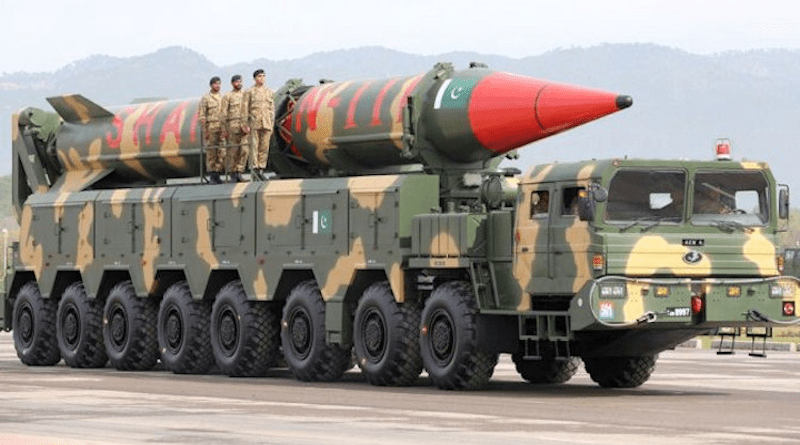About The First Islamic Bomb And Its Father – OpEd
By IDN
By Jonathan Power
Whenever I introduced Munir Khan to a friend I would say light-heartedly “and this is the father of Pakistan’s nuclear bomb,” just to enjoy the pleasure of watching the reaction. Khan himself would give a self-deprecatory smile. As Hans Blix, the former director of the International Atomic Energy Agency, the world’s nuclear policeman, put it to me, Khan was “a cheerful soul.”
The world has been told over and over again that the father of the Pakistani bomb was AQ (Qadeer) Khan, the metallurgist, who has just died, who in fact ran only one part of the Pakistan Atomic Energy Commission—whose chairman was Munir Khan. More correctly, we have been told that Qadeer Khan secretly set up an international network to supply the likes of North Korea, Libya and Iran with blueprints and materials for the manufacture of their own nuclear weapons. This was done for his private profit.
Khan and Khan. Too many got the two men muddled. And this worked in Qadeer’s favour. He was a man who had no compunction about claiming every bit of credit for himself and who loved to woo gullible journalists and parliamentarians who adored his tales of achievement. No wonder, when he was finally exposed as a nuclear racketeer, President Pervez Musharraf couldn’t have him formally arrested and tried. In fact, he pardoned him for his alleged crimes. Qadeer had become a popular icon in Pakistan, and thus untouchable.
A long and well-researched article that appeared two years ago in the Pakistani Defence Journal, written by M.A. Chaudri, usefully drew back the curtain on the precise roles of these two men. Both foreigners and Pakistanis, he writes, “have failed to understand the underlying efforts under Munir Khan and his team of world class nuclear scientists and engineers. They developed and led the entire nuclear weapons program including uranium mining for the bomb itself, and all related nuclear facilities, training institutions and technologies and the development of the complete nuclear fuel cycle and the still largely unknown plutonium program.”
Munir was a friend of Zulifikar Bhutto and the two of them tried unsuccessfully to persuade President Ayub Khan to build a bomb. But when Bhutto became president in 1971 he made his famous remark, “we shall eat grass if necessary but build the atomic bomb,” and Munir was given the green light.
Munir had been on the staff of the International Atomic Energy Agency since 1958, as head of the reactor engineering division. He developed extensive international contacts and was rich in managerial and scientific experience. It was he who pushed for the refinement of domestic uranium and persuaded the French to train his scientists in enrichment know-how. Munir later recruited Qadeer who brought to Pakistan the drawings of centrifuge designs he had purloined from the Dutch company he had been working for. But to develop these designs to enable the successful enriching of uranium was a complicated and complex process and depended on the expertise Munir had put together in Pakistan.
All along the pathologically ambitious Qadeer was working to undermine Munir. According to Chaudri, he paid Pakistani journalists to accuse Munir of being unpatriotic and being a member of the outlawed Qadiani sect. Earlier the Nobel prize winning physicist, Abdus Salem, had been driven out of Pakistan by a similar campaign. (Munir and Salem who went on to be a professor at Imperial College were good friends.)
After the coup by General Muhammad Zia-ul-Haq and the hanging of Bhutto, Munir’s grip was loosened. Zia, seeing Munir as a friend of Bhutto, allowed Qadeer to build up his image. Qadeer was willing, as Munir was not, to trumpet the idea of an “Islamic bomb.” Munir, self-effacing to a fault, later confessed that he should have fought off Qadeer’s grab for fame. Nevertheless, Munir still held the reins when in 1983 Pakistan reached an historic milestone- the bomb was ready and secretly a “cold test” was held. (A cold test is the actual detonation of a complete bomb but, instead of enriched uranium in the middle of the bomb, natural uranium is substituted.) So only nine years after India’s “peaceful nuclear explosion”, but 15 years before it came into the open with a full nuclear test, Pakistan had its bomb.
Munir retired from the chairmanship of the Pakistan Atomic Energy Commission seven years before Pakistan went public with the bomb. He died in 1999 and in his later years he tried to persuade successive presidents that Qadeer was selling Pakistan’s know-how for profit. But by then Qadeer was simply too powerful to move against.
Munir himself was no saint. He was actually chairman of the board of the International Atomic Energy Agency from 1986 to ’87. Supposedly the chairman of the world’s policing authority, back home he was engaged in subverting it. Presumably earlier, when he had been an important staff member, he was building up the contacts and knowledge he later milked to build the bomb at home.
The world was duped many times over by the intrigues of Pakistan’s nuclear scientists and the politicians who sponsored them. Nothing suggests that the intrigues and the disinformation campaigns won’t continue. This is now part of the culture of Pakistan’s military establishment—and the politicians and journalists who associate with them.
About the author: The writer was for 17 years a foreign affairs columnist and commentator for the International Herald Tribune, now the New York Times. He has also written many dozens of columns for the New York Times, the Washington Post, the Boston Globe and the Los Angeles Times. He is the European who has appeared most on the opinion pages of these papers. Visit his website: www.jonathanpowerjournalist.com

